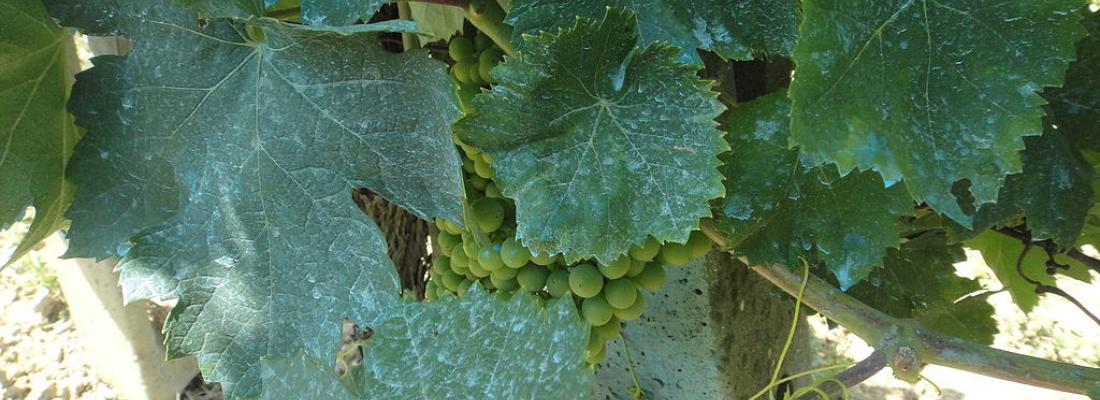Agroecology Reading time 3 min
Can organic farming manage without copper?
Published on 16 January 2018

Copper is used in Europe by most types of agriculture to control certain fungal or bacterial diseases, and plays an important role in protecting crops grown under organic conditions. The use of copper is currently approved in more than 50 situations in arboriculture, viticulture, market garden or arable crops, using formulations that are permitted by the specifications for organic farming. In particular, it is used in vineyards to control downy mildew (Plasmopara viticola), on arable crops to protect potato against late blight (Phytophtora infestans) and, to a lesser extent, in apple orchards to prevent the spread of scab (Venturia inaequalis). These three pathogens are responsible for major crop losses.
However, excess copper levels can have harmful effects on growth and development in most plants, and on soil micro-organisms and fauna. These effects have led to regulatory restrictions on its use (maximum doses that can be applied per hectare and per year) and even bans on its use for plant protection in some European countries (Netherlands, Denmark) which have raised questions as to the alternatives that are currently or potentially available to limit or eliminate the use of copper.
What are the alternatives to copper?
Several alternatives to copper are available, with effects that are often partial. In many cases it is therefore necessary to use them in combination to achieve effective crop protection. These include genetics, where the determination of resistant varieties is of particular importance. However, ensuring the sustainability of resistance over time requires genetic constructions that combine several types of resistance (pyramiding) and in the field, managing the use of these varieties so as not to stimulate the ability of pathogens to overcome them.
Several natural products with biocidal effects and/or natural effects that stimulate plant defences (including certain essential oils, notably of orange) are also among the tools available, alongside prophylactic measures based on the elimination of contaminated crop residues or the deployment of rain shelters which can prevent contamination by pathogenic spores. These shelters are effective but expensive. The efficacy of natural products (biocides and natural stimulants) is more variable when used in the field than in the laboratory, and R&D trials1by companies involved in biocontrol will still be necessary to improve their effectiveness.
The knowledge assembled in the expert report shows that strategies to avoid copper use, combining several levers, could be envisaged in apple orchards or for potato crops. In these two cases, combining these levers gave rise to (as yet theoretical) proposals regarding crop protection systems that might enable its complete replacement and the redesign of systems. In the short term, the genetics lever is not yet applicable under all conditions in the case of vines: the regulations on designation of origin need to change, alongside the gradual deployment of resistance so as to ensure it is not circumvented and definitively lost. So although the genetic option is an essential strategy for the medium term, it will be a reduction in the doses of copper used that will constitute the principal lever in the short term. And indeed, the copper doses could be reduced without there being any loss of efficacy.
Combining different control measures requires a redesign of cropping systems and crop protection, both of which need to be validated using experimental systems. The expert report also highlighted a lack of references on the ability of the farms concerned to adopt such measures and cover the costs involved (including training and the organisation of work). A further study will also be needed regarding the capacity (both financial and strategic) of agricultural supplies companies to develop and then sell the innovations that can replace copper.
1 SMaCH = INRA federative metaprogramme: Sustainable Management of Crop Health.
|
This collective scientific expert report was managed by INRA’s Delegation for Collective Scientific Expertise, Foresight and Advanced Studies (DEPE). It mobilised some ten experts from different research organisations and was based on a bibliographical corpus of around 900 references. |
A debate initiated following the EFSA report
The collective scientific expert report entitled "Can organic farming manage without copper?" did not focus on an opportunity to recertify copper (or not) under current conditions or using lower doses. Such a decision is the remit of the national and European authorities, and they can only take it in light of risk evaluations produced by their health and environmental safety agencies (such as EFSA or ANSES). To provide the foundations for this debate, EFSA has just published a detailed report which is available via its website. The questions posed to INRA were designed to supply decision-makers, and also producers or organisations that wish to limit or abandon the use of copper (independently of any regulatory requirements) with factual and proven elements regarding the alternatives or combinations of alternatives that are available, their efficacy and the problems or obstacles implied by their adoption.